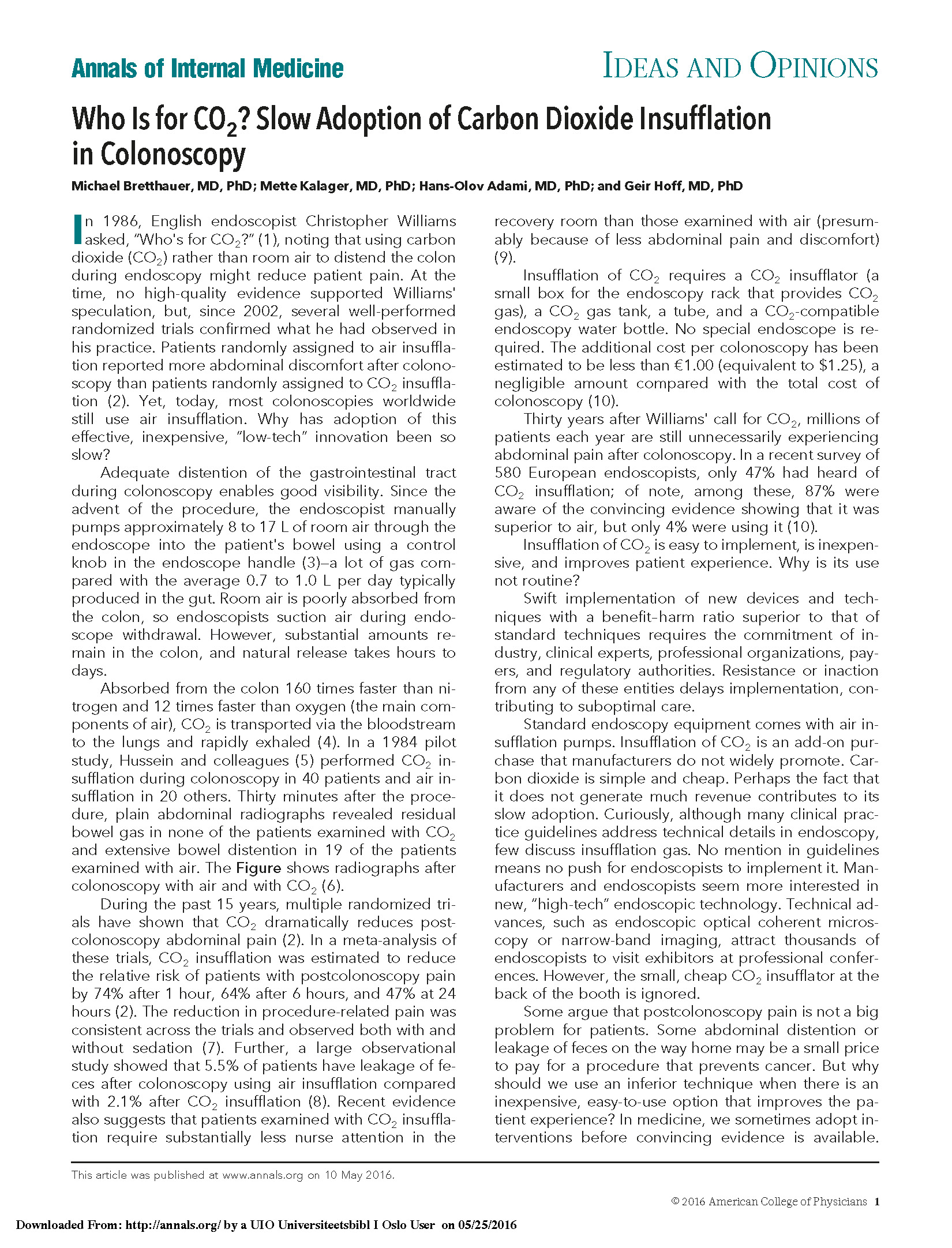The Clinical Effectiveness Group (Bretthauer, Kalager, Adami and Hoff) recently published the article Who is for CO2? Slow adoption of carbon dioxide insufflation in colonoscopy, in Annals of Internal Medicine. The authors want to encourage endoscopists to follow best practice, and use CO2 for insufflation of the colon. During colonoscopy, the colon needs to be distended in order to increase visibility and availability of lesions. Traditionally, 8-7 L of room air is used for insufflation, as compared to 1 L/day normally produced by the intestine. Room air consists of mainly nitrogen and oxygen. CO2 is absorbed 160 times faster than nitrogen, and 12 times faster than oxygen. In other words, using CO2 decreases the period of distended colon.
There is compelling evidence that CO2 decreases patient discomfort, both pain and post colonoscopy incontinence. Replacing room air with CO2 is low-cost (€1/$1.25 per colonoscopy) and will improve patient experience, as the colon stays distended for a shorter period of time. The authors encourage endoscopists world-wide to change their habit, and use CO2 rather than room air.

– Why should we use an inferior technique when there is an inexpensive, easy-to-use option that improves patient experience? says Michael Bretthauer, first author of the paper.
.jpg)